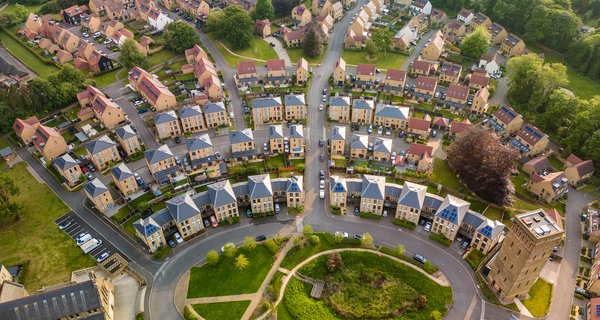Conclusion and next steps
Great Britain is in the early stages of a flexibility transition. This report has described the ways that smart prepayment customers have responded to, and derived benefits from, the early iterations of the DFS, even while financial rewards were low in the context of annual energy bills.
Our findings suggest a variety of motivations for participation that go beyond bill savings – especially around learning more about energy saving (for self and others), getting enjoyment from participating in an interesting initiative, and treating the events as an opportunity to disconnect and do something different. It also shows that even small savings are welcomed, as ‘every little helps’ when things are tight. We didn’t hear concerns around the fairness of rewards – which was a more prominent theme both in our forum analysis and in previous DFS evaluation.
While our small sample of participants cannot fully represent prepayment customers, it isn’t a surprise that we saw little presence of low-carbon technologies like solar panels, domestic batteries, heat pumps, and electric vehicles. Where our participants were able to be flexible, it was mainly through manual changes in the timings of activities. Often this was against a background of already low electricity use. The irregular and infrequent nature of DFS events meant that these changes were generally acceptable, although the idea of making them more constantly was less attractive.
Participants showed variable levels of understanding of the reasons why DFS events happen, and we add our call to others to take this opportunity to raise awareness of the underlying need for flexibility as part of decarbonising the energy system. We believe there is scope to do this in ways that speak more meaningfully to the personal motivations of DFS participants.
Building awareness of flexibility
At this stage in the flexibility transition, building familiarity with flexibility should be a fundamental goal. As heating and mobility are increasingly electrified across income levels and tenures, wider societal recognition of the need for (and benefits of) flexible operation will become more critical. Policymakers and system planners should be thinking carefully now about how this can be effectively achieved. The DFS potentially provides a valuable vehicle because it is high-profile and eye-catching, but with relatively low stakes.
Given the relatively low value of flexibility and low capacity of many households to significantly reduce their electricity use for events, suppliers need to be mindful of not pushing households into changes in activities that outweigh the rewards. A balance needs to be struck that capitalises on the opportunity to provide moments for learning, fun, or relaxation, without placing a sense of financial obligation onto households to make disruptive changes in order to realise small savings. This could include approaches such as:
- learning packs and games for kids
- low energy, low stress meal suggestions (‘picnic nights’)
- chillout hours (eg, with book, music, or relaxation suggestions)
- energy tune-up events (eg, with suggestions for ways of experimenting to track and maximise savings).
Importantly, a clear thread should always be drawn between the engagement and a clear statement of why it is being done now (ie, to take pressure off the grid). Taking such an approach probably means rethinking the metrics that are used when measuring the effectiveness of schemes like DFS. While the magnitude of demand response will remain important from the perspective of system operators, policymakers and system planners should take a more strategic interest in knowledge/awareness and satisfaction.
Recognising reliability
It is clear that some prepayment customers are indeed able to deliver larger reductions that can represent both more significant financial savings, and add up to a meaningful level of demand response. The key challenge here becomes managing the predictability and reliability of the response – especially given proposals to reduce payments to DFS operators for under- or over-delivery of response.
A variety of mechanisms could be explored to increase reliability, including recognising consistency of response as well as magnitude, supporting automation of response, gamification approaches, seeking commitments or pledges to respond, along with generic approaches such as providing tips on effective energy saving. However, it is important to be mindful of the reasons why households may only be able to respond sporadically, such as interaction with children’s schedules, and take an enabling rather than a pressuring approach (eg, see low-energy meals suggestion above).
These approaches are summarised in Figure 1.

Figure 1: Heuristic for how to engage with customers depending on the magnitude and reliability of their response to DFS events.
The personas we have begun to develop can be helpful in thinking about how solutions for these quadrants might be developed. For example, Energy Educators with their higher electricity use but inflexible schedules may tend to be positioned in the top left. Flexible Disconnectors, with lower electricity use but more discretion around when they use electricity, are likely in the lower right. Energy Explorers may already be providing reliable flexibility. Wherever a household is positioned, it is clear that building their underlying capacity to be flexible is likely to make it easier both to provide more flexibility, and to do it more reliably.
Building flexibility capital
Where the capacity to provide flexibility becomes valued, it can be helpful to view it as a form of capital – flexibility capital. Households that can provide more flexibility, for example by smart charging an electric vehicle or cooking at different times, have more flexibility capital. This discussion has mostly focused on how households’ existing holdings of flexibility capital are unlocked and turned into flexibility (and rewards) by services like Power Payback.
We need to recognise that the value of flexibility is very likely to increase, and with it the potential for the gap to grow between those households that are able to provide larger responses and those who can’t. So alongside building awareness, now is a time to focus on building the flexibility capital of a broader range of households. While factors such as awareness of how to provide flexibility are part of this, households with larger loads, or onsite generation or storage, are best placed to make larger and more reliable savings.
If we are to rapidly maximise the amount of flexibility we can draw on in a decarbonised electricity system, we need to explore ways of getting these technologies into the homes or communities of a broader range of households – including those of prepayment customers. While subsidy schemes such as the Social Housing Decarbonisation Fund help in this regard, a host of further opportunities and challenges present themselves. These include innovative business and funding models, identifying barriers in regulation and procurement, and tackling issues with engagement and installed performance of technologies.
We expect to conduct future work in these areas with a view to improving inclusion in the low-carbon transition – as an end itself, but perhaps more importantly as a means to success.








